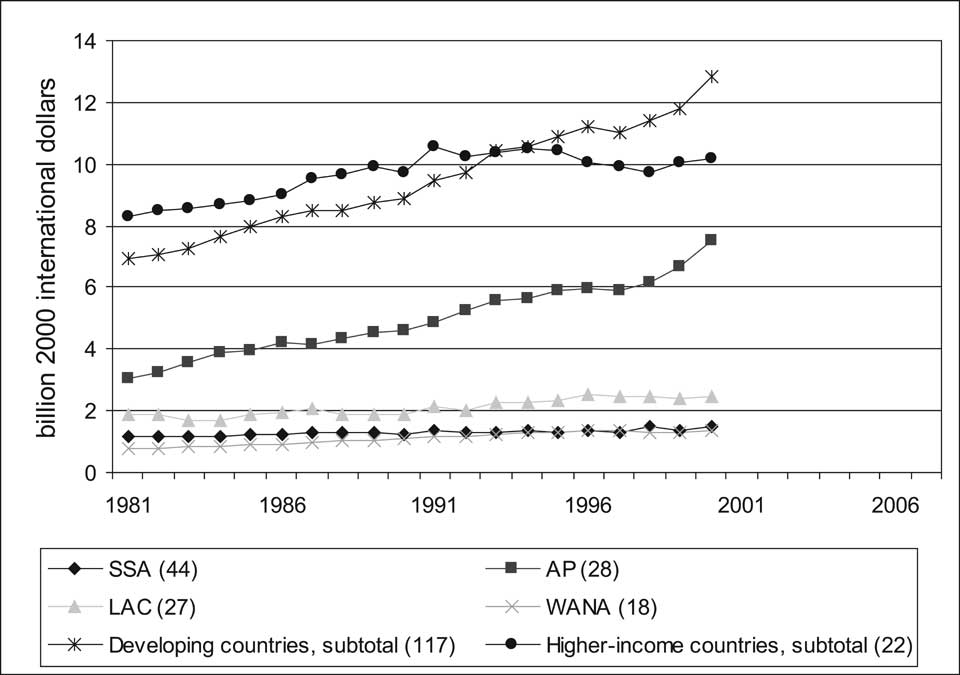group invested more on public agricultural R&D than the combined total in the industrialized world. Investments by Asia and Pacific countries as a group grew relatively resulting in an increasing share of the global total; the regional share was 33% in 2000 compared to only 20% in 1981. Most of this growth took place during the late-1990s. In contrast, the corresponding share for sub-Saharan Africa continued to decline, falling from 8 to 6% of the global total between 1981 and 2000.
Public agricultural R&D has become increasingly concentrated in just a handful of countries. Among the rich countries, the United States (US) and Japan accounted for 54% of public spending in 2000; about the same as two decades earlier. Three developing countries, China, India, and Brazil, spent 47% of the developing world's public agricultural research total, an increase from 33% in 1981. Meanwhile, only 6% of the agricultural R&D investments worldwide were conducted in 80 countries that combined had a total to more than 600 million people in 2000.
Growth in inflation-adjusted spending has slowed down since the 1970s when most regions experienced high growth rates (Figure 8-2). Overall spending in the Asia and Pacific region increased with an annual growth rate of 3.9% during the 1990s; lower than the regional growth in the 1980s (Beintema and Stads, 2006). However the average growth

Figure 8-1. Total public agricultural research expenditures by region, 1981-2000. Source: Pardey et al., 2006b based on Agricultural Science and Technology Indicators (ASTI) data at www.asti.cgiar.org
Note: See Table 8-1